
Wandelweiser composer Antoine Beuger presents 25 of the 50 pages of his "Ockeghem Octets", each piece dedicated to one of Beuger's heroes, performed by an octet comprised of melodica, concertina, harmonium, e-bow zither, cello, flute, accordion and alto flute, each player provided notes and a playing methodology to create these gorgeous soundscape.
Out of Stock
Quantity in Basket: None
Log In to use our Wish List
Shipping Weight: 3.00 units
Sample The Album:
Antoine Beuger-composer
Ryoko Akama-melodica
Seamus Cater-concertina
Kate Halsall-harmonium
Sarah Hughes-e bow, zither
Ecka Mordecai-cello
Harriet Richardson-flute
Leo Svirsky-accordion
Kathryn Williams-alto flute
Click an artist name above to see in-stock items for that artist.
Label: Another Timbre
Catalog ID: at114
Squidco Product Code: 24082
Format: CD
Condition: New
Released: 2017
Country: UK
Packaging: Cardboard Gatefold
Recorded in Sheffiled, England, on February 26th, 2017, by Simon Reynell.
"Each piece is dedicated to one of my "heroes". They may be visual artists (Tschirtner), philosophers/mathematicians/scholars (Dedekind, Cantor, Jankelevitch, Florenski, Meinong, Routley, Badiou, Ihwe), film makers (Peckinpah, Kiarostami, Ozu, Els van Riel), poets (Mallarme, Ashbery, Faverey, Gerhardt, Basho, Leopold). In this series Ockeghem is the only composer. Of course I have more than one musical "hero" (John Cage, Froberger, Beethoven being the most important others). Often the namings have to do with sound (dedekind duos, cantor quartets, faverey tunings for fourteen, ihwe tunings for twenty), as is the case here: ockeghem octets. Each of the ockeghem octets also constitutes a kind of double canon, which, of course, links the piece to Ockeghem formally as well."-Antoine Beuger
Interview with Antoine Beuger
As I understand it, the 'ockeghem octets' are one of a long series of pieces, each one written for one more musician than the previous piece in the series, starting with the 'dedekind duos' and ending with the 'ihwe tunings for twenty'. What gave you the idea for series?
1996-1998 I had been focusing on solo music or, as i would call it now: music for solo situations, exploring in what ways solitude (as opposed to loneliness) can be reflected and experienced meaningfully in a musical situation.
1998 my musical exploration of "being two", of the duo, started and is still continuing. you certainly noticed, that a lot of my music is duo music, or: music about "being two", or, more radically, about love. I strongly believe, that of all the arts, music, the art of sounds appearing and disappearing, the art of approximation (in tuning, timing, sound balancing ...), can be the most reminiscent, commemorative, resonant of the single most important event, that human beings may experience in their lives: love. And if music can be this, it should be this. Especially in the constellation that is by itself closest to a love relationship: the duo.
2003, very much inspired by Alain Badiou's book Number and Numbers, a study of number with a very strong political subtext, it occurred to me, that the number of people, which constitute a group, might have an essential impact on what can happen, which kind of interactions, of sub-groupings etc. may emerge in such a group.
In other words: that going from 1 to 2, or from 2 to 3, etc. is not just adding one, but shifting from one situation to another, different one. Badiou's book encouraged me to think of each number as having its own "ontology", constituting its own special "world", as it were.
My idea then was to create a series of musical situations in which all players do the same: play very long, very soft tones. So it is not their being different from each other, that primarily shapes the musical situation, but their number, their "being two", their "being five", ...
Of course, the shifts are more overtly dramatic with the smaller numbers, as in real life. But continuing my search I was really surprised, how even situations like "being eleven" or "being seventeen" may induce very specific worlds.
Since 2010 Johnny Chang has been putting the series into practice in Berlin, this way allowing the ensemble Konzert Minimal to gradually emerge along the growing number of players involved in the pieces.
Last year 'van riel tunings for fifteen' was performed.
Wandelweiser is stereotypically thought of as being very sparse music, but - perhaps inevitably - pieces for larger ensembles, like the 'ockeghem octets', don't sound like this and are quite dense in parts. Were you consciously trying to get away from the stereotype of what Wandelweiser music sounds like?
No. I had been interested in playing and composing music with long, quiet sounds since 2002. Before that my music mostly consisted of rather short sounds immediately disappearing upon appearing. Long, quiet sounds with no specific durations allow the players to focus their attention completely on (the playing of) each individual sound, tuning in with the others, without having to think about coordination or formal intentions. On the sonic surface, this of course creates more continuity or, at times, density.
Like most other Wandelweiser music, these pieces refute any stereotypes, that may exist, all by themselves.
Each of the pieces in the series includes a kind of dedication in its title to someone whose work you admire. Why Ockeghem, and does your piece connect with his actual music in some way?
Each piece is dedicated to one of my "heroes". They may be visual artists (Tschirtner), philosophers/mathematicians/scholars (Dedekind, Cantor, Jankélévitch, Florenski, Meinong, Routley, Badiou, Ihwe), film makers (Peckinpah, Kiarostami, Ozu, Els van Riel), poets (Mallarmé, Ashbery, Faverey, Gerhardt, Basho, Leopold). In this series Ockeghem is the only composer. Of course I have more than one musical "hero" (John Cage, Froberger, Beethoven being the most important others). Often the namings have to do with sound (dedekind duos, cantor quartets, faverey tunings for fourteen, ihwe tunings for twenty), as is the case here: ockeghem octets. Each of the ockeghem octets also constitutes a kind of double canon, which, of course, links the piece to Ockeghem formally as well.
It's now 25 years since you and Burkhard Schlothauer set up the Wandelweiser collective. Over this period the group and its influence have expanded a great deal, and the work being produced under its name has diversified hugely. What would you say are the key elements of continuity across this period, and what do you see as the major changes? And how do you think it will develop over the next decade or so?
Honestly, I have no idea, how Wandelweiser and whatever and whoever is connected with that name will develop. New composers became involved, bringing new ideas and new relations. Also each composer regularly catches the others with surprise. Paradoxically, if anything, it is the respect towards and the embracement of this never standardizable plurality and discontinuity, that has been the key element of continuity across time. My poet friend Oswald Egger coined quasi-mathematical term "discrete continuity" for this phenomenon.
Maybe it makes more sense to think of Wandelweiser not in terms of aesthetics alone, but rather as a multi-faceted practice, a very open meeting place for people, works, events, ideas, passions, allowing all kinds of unforeseeable work and interactions to germinate and grow into many unexpected directions. For that to (hopefully continue to) happen, I guess, our courage to withstand the lure to be more organised, more well-defined, more in control of what "we" are, or what "Wandelweiser" is, of what people write about "us", more determined about who belongs to "us" and who doesn't, in short: to withstand the lure to be and to represent something, is probably our main asset.
Recent developments in the world, especially the unbridled conflation of economic and political power in the new USA government (which amounts to the abolition of politics as a value based public interaction between free people), have made me realise even more, that our way of dealing with each other and each other's work runs completely contrary to these totalitarian developments and that, again, what we do is subversive reality and not mere romantic intention. I could imagine, that Wandelweiser (whatever and whoever that is) will be inspired increasingly by the awareness of this political dimension of what we do.
"Between "dedekind duos" (2003) and "ihwe tunings for twenty" (2005), Wandelweiser co-founder Antoine Beuger wrote a series of pieces for groupings of all sizes from two members up to twenty, the scores being published by Wandelweiser. In each piece, the musicians softly play long, sustained notes designated in the score, with the ebbing and flowing tones creating pleasing soundscapes that slowly evolve. Each of the series was dedicated to one of Beuger's heroes, with the name of any series being selected largely for reasons of alliteration, as in "Ockeghem Octets." Another Timbre releases have already featured two other series, the double-disc set of Cantor Quartets (2013) and tschirtner tunings for twelve (The Berlin series no. 5) (2014) by Konzert Minimal. So, numerically, Ockeghem Octets fits in nicely alongside those two.
Recorded in Sheffield in February 2017, this disc features versions of twenty-five of the fifty pages of the Ockeghem Octets score, performed by an octet that includes melodica, concertina, harmonium, e-bow zither, cello, flute, accordion and alto flute. That instrumentation was well chosen as all eight instruments can easily produce sustained notes and their sounds blend together beautifully. Each page of the twenty-five features two lines of four tones which are all played long and softly; four of the musicians play one line of tones, each in their own time, and the other four musicians play the other line. Together, the twenty-five pieces run for about sixty-eight minutes, an average of about two-and-a-half-minutes per piece.
So, there is plenty of variety here because the music changes frequently, but that does not lead to incoherence as the pieces have an overarching unity that binds them all together. Like the albums of Cantor quartets and Tschirtner tunings for twelve, this music belies the oft-repeated stereotype of Wandelweiser music being sparse and punctuated by silences. In the hands of the eight musicians, Beuger's eight notes per piece are transformed into a satisfying series of rich soundscapes replete with drama and emotion. Given that each piece specifies no more than the notes and the playing methodology, it feels as if the octet has performed alchemy. Of course, Beuger deserves due credit for designating series of eight notes that combine so well together. It is remarkable to reflect that, in other hands, the same eight notes could have produced results that were very different but just as impressive...
Antoine Beuger has spoken of the effect on the music of moving from a duo to a trio to a quartet etc. That effect is plain to hear when comparing the quartet, octet and twelve-piece group on the available Another Timbre discs. Of course, there is plenty of scope to fine tune such comparisons by releasing recordings of the missing numbers, quintet, sextet, septet, nonet.... (you get the idea.) On the evidence so far, we must hope they will follow. "-John Eyles, All About Jazz

The Squid's Ear!
Artist Biographies
• Show Bio for Antoine Beuger "Antoine Beuger (b. 1955 in Oosterhout, Netherlands) studied composition with Ton de Leeuw at Sweelinck Coservatorium in Amsterdam 1973-78. In 1990 he began composing after an interruption of about 10 years. Two years later he founded Edition Wandelweiser together with composer/performer Burkhard Schlothauer. Since 1994 he's been active with the conception and organisation of KLANGRAUM, a concert series at Kunstraum Düsseldorf. During the years 1995-2001 he was working together with visual artist Mauser as artistic director of "Werkraum", Place for Interdisciplinary Artistic Events, Cologne. Since 1996 he's been artistic director of edition wandelweiser records and since 2004 managing director of Edition Wandelweiser gmbh." ^ Hide Bio for Antoine Beuger • Show Bio for Ryoko Akama "Ryoko Akama was born in 1976 in Japan, and currently lives in Huddersfield, West Yorkshire, United Kingdom. She is a member of The Lappetites, Rolex2$, Syth;s. She is a sound artist/composer/performer, who approaches listening situations that magnify silence, time and space and offer quiet temporal/spatial experiences. Her sound works are connected to literature, fine art and technology, and employ small and fragile objects such as paper balloons and glass bottles, creating tiny occurrences that embody 'almost nothing' aesthetics. She composes text events and performs a diversity of alternative scores in collaboration with international artists. Her works and projects have been funded by Arts Council England, Japan Society, Daiwa-Anglo Foundation, University of Huddersfield, Kirklees Council, Pro Helvetia and more. She is also active as a curator: collaborates with festivals, runs melange edition label and co-edits reductive journal/mumei publishing." ^ Hide Bio for Ryoko Akama • Show Bio for Seamus Cater "Born in England, son of an Essex folk singer, Seamus Cater was surrounded by English revivalist folk music from day one. He eventually moved to Amsterdam in 2000, where he has been working on different kinds of music; acoustic, electronic, composed, and improvised. Cater organizes two Amsterdam concert series, DNK Amsterdam and Pest House, and is the founder of Nearly Not There Records, a small stock, non-profit record shop in Amsterdam specializing in new music in many forms, mostly avant-garde and experimental. The Three Things You Can Hear follows Cater's 2010 collaboration with NYC banjoist Woody Sullender (When We Get to Meeting) and his 2012 collaboration with Finnish multi-instrumentalist Viljam Nybacka (The Anecdotes). Recorded in Amsterdam and Berlin, The Three Things You Can Hear is a solo album consisting of a group of songs developed over a period of about three years. They were written and performed using a duet concertina made in 1941 (serial number Crabb 9807), which Cater found in a junk shop in Amsterdam. Given Cater's folk music background, and the fact that his father also played a concertina, it was a fortuitous event to find an instrument such as this, a black leather squeeze-box made in London. The slow repair and learning of this instrument led to a close relationship and unconventional playing style. By no means a concertina virtuouso, Seamus set out to find simpler, more primitive techniques of playing, and as the songs became ready, he invited some Berlin musicians to accompany him on different songs. The album includes contributions from Kai Fagaschinski and Michael Thieke (The International Nothing), Koen Nutters and Morten J. Olsen (from The Pitch), and Johnny Chang (of Konzert Minimal). When asked about the influences that informed the making of the album, Cater mentions Scottish folk singer Ivor Cutler and English folk singer Peter Bellamy, as well as music from other cultures, chiefly African, Arabic, South American, Indonesian. . . . His distinctive phrasing recalls at times the fragile music of Robert Wyatt's solo releases, and at others the elaborate folk constructions of Peter Blegvad and John Greaves, particularly their surreal 1977 concept album from Kew. Rhone. Seamus Cater: voice and duet concertina. With: Koen Nutters: double bass; Morten J. Olsen: bass drum and vibraphone; Michael Thieke: clarinet; Kai Fagaschinski: clarinet; Johnny Chang: viola; Han Jacobs: saw. Recorded by Seamus Cater, mixed by Clare Gallagher, and mastered by Jeff Carey." ^ Hide Bio for Seamus Cater • Show Bio for Kate Halsall "Kate Halsall is a pianist developing and commissioning new music for a variety of projects. Recent work includes Galvanize for Hack The Barbican; Hear the City, a music app design residency with Stromatolite; Miniaturised Concertos | Maché, an album of new works for piano duo, electronics and ensemble, released May 2016. She has performed widely in the UK and internationally including for Aldeburgh Music, The Piano- Glasgow City of Music, Ockham's Razor (Not Until We Are Lost) with music by Graham Fitkin, hcmf// with Chimera Ensemble, Sonorities, Michael Clark Dance Company (Oh My Goddess), Tête à Tête Opera Festival, Colourscape, SBC Imagine Children's Festival, Multiple Piano Day BBC Proms, Ether Festival, Marte Festival Malaga, IUC Rome, Festival of Dimitria Thessaloniki, Montclair University New Jersey, Colorado College, Festival de la Sainte Baume Provence, Timezones Festival Italy, The Banff Centre Canada, Onassis Cultural Centre Athens." ^ Hide Bio for Kate Halsall • Show Bio for Sarah Hughes "Sarah Hughes is a London-based improviser playing the chorded zither, piano and e-bow. she is part of the Loris ensemble." ^ Hide Bio for Sarah Hughes • Show Bio for Ecka Mordecai "Ecka Mordecai is a 'cellist based in Manchester, U.K. Originally trained in Renaissance (viola de gamba) and classical music, she now works in the realms of group free-improvisation and composition for solo cello with sound objects." ^ Hide Bio for Ecka Mordecai • Show Bio for Leo Svirsky "Leo Svirsky (b. 1988, USA) is a composer, improviser, pianist and accordionist living in the Hague. His work explores how the instability of listening itself transforms the perception of musical semantics and affect. Disorientations of memory and spatial awareness are nevertheless bounded by a rootedness in song and story. He has released works on Emanem (Different Tesselations with Veryan Weston), Slow Fidelity (duo with Katt Hernandez), and Ehse records (Songs in the Key of Survival). He has performed his own work at venues such as REWIRE (the Hague), National Sawdust (Brooklyn), Kunstcentrum Vooruit (Ghent), and Klangraum (Dusseldorf). He shared billings with artists such as James Blackshaw and Laaraji. He holds a masters in Composition from the Royal Conservatoire of the Hague studying under Cornelis de Bondt and Martijn Padding, as well as private study with Antoine Beuger. In addition holds a masters in piano performance from the same institution under Ellen Corver, and a bachelors under Ellen Corver and Rian de Waal. Previous teachers include Santiago Rodriguez, Irena Orlov (piano), Lawrence Moss, and Frances Mckay (composition)." ^ Hide Bio for Leo Svirsky • Show Bio for Kathryn Williams "Kathryn Williams is a flautist who performs solo recitals, chamber music, and with orchestras with a particular interest in new and experimental music. Recent performances include a Stockhausen masterclass with Kathinka Pasveer at Theater Basel, solo and chamber music performances with Ensemble Linea Academy at Cité de la musique et la danse Strasbourg, and a concerto with Manchester Camerata. She has performed with various orchestras including the BBC Philharmonic, The Hallé, Royal Liverpool Philharmonic, and Sinfonia Cymru and plays regularly with new music group The House of Bedlam. Kathryn's current project, Coming Up for Air, has been selected for YCAT's Sounding Board: Project Mentoring. As a music educator Kathryn specialises in experimental performance practice and early-years education. Recently this has included guest lecturing at the Royal Northern College of Music, contributing to courses with Aldeburgh Young Musicians, delivering performances and workshops for Live Music Now, and long-term residencies at Alder Hey Children's Hospital, Manchester Museum and in a central Manchester nursery school. Kathryn earned a BMus, MMus, and International Artist Diploma from the Royal Northern College of Music with teachers Peter Lloyd, Richard Davis, Katherine Baker, Stephen Preston, Karin de Fleyt and others. Prizes include RNCM Bach Prize, RNCM Concerto Competition (on two occasions), British Flute Society Young Artist Competition, and National Foundation for Arts Award (USA)." ^ Hide Bio for Kathryn Williams
11/20/2024
Have a better biography or biography source? Please Contact Us so that we can update this biography.
11/20/2024
Have a better biography or biography source? Please Contact Us so that we can update this biography.
11/20/2024
Have a better biography or biography source? Please Contact Us so that we can update this biography.
11/20/2024
Have a better biography or biography source? Please Contact Us so that we can update this biography.
Have a better biography or biography source? Please Contact Us so that we can update this biography.
11/20/2024
Have a better biography or biography source? Please Contact Us so that we can update this biography.
11/20/2024
Have a better biography or biography source? Please Contact Us so that we can update this biography.
11/20/2024
Have a better biography or biography source? Please Contact Us so that we can update this biography.
Track Listing:
1. Ockeghem Octets 2:51
2. Ockeghem Octets 2:53
3. Ockeghem Octets 2:51
4. Ockeghem Octets 2:39
5. Ockeghem Octets 3:01
6. Ockeghem Octets 2:41
7. Ockeghem Octets 3:02
8. Ockeghem Octets 2:44
9. Ockeghem Octets 2:35
10. Ockeghem Octets 2:51
11. Ockeghem Octets 2:29
12. Ockeghem Octets 2:48
13. Ockeghem Octets 2:36
14. Ockeghem Octets 2:32
15. Ockeghem Octets 2:44
16. Ockeghem Octets 2:32
17. Ockeghem Octets 2:46
18. Ockeghem Octets 3:06
19. Ockeghem Octets 2:29
20. Ockeghem Octets 2:35
21. Ockeghem Octets 2:37
22. Ockeghem Octets 2:20
23. Ockeghem Octets 2:45
24. Ockeghem Octets 2:41
25. Ockeghem Octets 2:40
Compositional Forms
Octet Recordings
New in Compositional Music
New in Compositional Music
Search for other titles on the label:
Another Timbre.

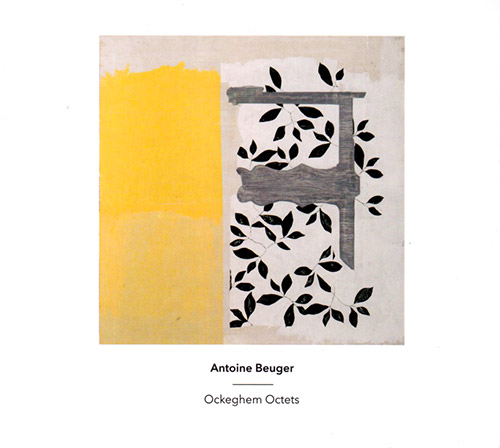
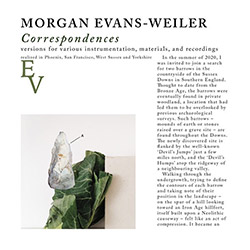
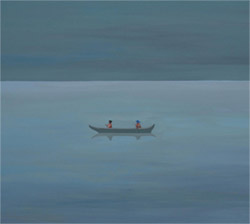


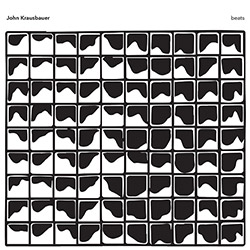




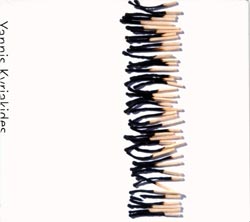


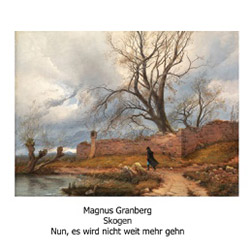
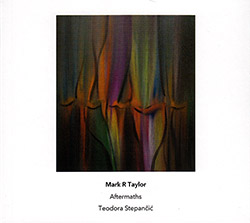





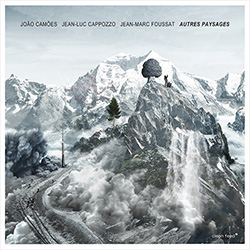








![Guy, Barry / Ken Vandermark: Occasional Poems [2 CDs]](https://www.teuthida.com/productImages/misc4/34849.jpg)
![Novoa / Carter / Mela Trio: Vol.1 [VINYL]](https://www.teuthida.com/productImages/misc4/35236.jpg)


![Elephant9 : Mythical River [VINYL]](https://www.teuthida.com/productImages/misc4/34624.jpg)
![Evans, Peter (Evans / Eldh / Black): Extra [VINYL]](https://www.teuthida.com/productImages/misc4/35279.jpg)

![McPhee, Joe: Straight Up, Without Wings [BOOK]](https://www.teuthida.com/productImages/misc4/35454.jpg)
![Jeck, Philip: rpm [2 CDs]](https://www.teuthida.com/productImages/misc4/35455.jpg)













![Barker / Parker / Irabagon: Bakunawa [VINYL]](https://www.teuthida.com/productImages/misc4/35533.jpg)
![Blaser, Samuel / Marc Ducret / Peter Bruun: Dark Was The Night, Cold Was The Ground [VINYL 10-inch]](https://www.teuthida.com/productImages/misc4/35492.jpg)








![Warren, Kenny (Warren / Hoffman / Ellman): Sweet World [VINYL]](https://www.teuthida.com/productImages/misc4/35451.jpg)




![Blake, Ran / Dave Knife Fabris: Live Amsterdam 2006, First Visit [CD + POSTCARDS]](https://www.teuthida.com/productImages/misc4/35275.jpg)













![DNS: Taking Big Bites Of The Khandas Three Cafes Deep [2 CDs]](https://www.teuthida.com/productImages/misc4/35334.jpg)




![Cleaver, Gerald: The Process [VINYL]](https://www.teuthida.com/productImages/misc4/34966.jpg)




![Alva Noto: HYbr:ID II [VINYL 2 LPs]](https://www.teuthida.com/productImages/misc4/35201.jpg)

![Baron, Derek / Luke Martin: Distinct and Concealed [CASSETTE + DOWNLOAD]](https://www.teuthida.com/productImages/misc4/35079.jpg)

![Lyle, Erica Dawn : Colonial Motels [CASSETTE + DOWNLOAD]](https://www.teuthida.com/productImages/misc4/35080.jpg)









![Sanna, Claudio: Compositori Sardi Contemporanei II [2 CDs]](https://www.teuthida.com/productImages/misc4/35317.jpg)







![Zurria, Manuel: Fame di Vento [3 CDs]](https://www.teuthida.com/productImages/misc4/35167.jpg)

![Granberg, Magnus / Nattens Inbrott / Skogen: Holde Traume, Kehret Wieder! [2 CDs]](https://www.teuthida.com/productImages/misc4/35038.jpg)
![Frey, Jurg: Outermost Melodie [2 CDs]](https://www.teuthida.com/productImages/misc4/35039.jpg)

![Pavone, Jessica: Reverse Bloom [VINYL]](https://www.teuthida.com/productImages/misc4/34895.jpg)




![Modney (Modney / Wooley / Gentile / Roberts / Pluta / Symthe / ...): Ascending Primes [2 CDs]](https://www.teuthida.com/productImages/misc4/34852.jpg)









![Elephant9 with Terje Rypdal: Catching Fire [VINYL 2 LPs]](https://www.teuthida.com/productImages/misc4/35355.jpg)
![Deerlady (Obomsawin, Mali / Magdalena Abrego): Greatest Hits [VINYL]](https://www.teuthida.com/productImages/misc4/34876.jpg)




![Haino, Keiji: Black Blues [2 CDs]](https://www.teuthida.com/productImages/misc4/35109.jpg)



![Surplus 1980: Illusion of Consistency [CD]](https://www.teuthida.com/productImages/misc4/35069.jpg)
![Staiano, Moe: Away Towards the Light [VINYL + DOWNLOAD]](https://www.teuthida.com/productImages/misc4/35037.jpg)



![Caveira (Gomes / Sousa / Abras / Ferrandini): Ficar Vivo [VINYL]](https://www.teuthida.com/productImages/misc4/34643.jpg)
![Gregg, J. J. / David Van Auken: Lunar Prairie [CD w/ DOWNLOAD]](https://www.teuthida.com/productImages/misc4/34611.jpg)

![Coultrain: Mundus [VINYL]](https://www.teuthida.com/productImages/misc4/32439.jpg)
![Mattin: Songbook #6 [VINYL]](https://www.teuthida.com/productImages/misc4/27317.jpg)
![Punkappella: Wake Up [7-inch VINYL]](https://www.teuthida.com/productImages/misc4/17519.jpg)
![Residents, The: WARNING: UNiNC.: Live And Experimental Recordings 1971-1972 [VINYL 2 LPs]](https://www.teuthida.com/productImages/misc4/31521.jpg)
![Coultrain: Phantasmagoria [VINYL]](https://www.teuthida.com/productImages/misc4/30142.jpg)
![Lennon, Sean Ono: Asterisms [VINYL]](https://www.teuthida.com/productImages/misc4/34517.jpg)

![Coley, Byron: Dating Tips for Touring Bands [VINYL]](https://www.teuthida.com/productImages/misc4/17906.jpg)

![Lost Kisses: My Life is Sad & Funny [DVD]](https://www.teuthida.com/productImages/misc4/lostKissesDVD.jpg)